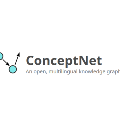Given the remarkable success that large visual language models (LVLMs) have achieved in image perception tasks, the endeavor to make LVMLs perceive the world like humans is drawing increasing attention. Current multi-modal benchmarks mainly focus on the objective fact or certain topic related potential knowledge within a image, but overlook the associative relations between multiple images. Therefore, we define a multi-image relation association task, and meticulously curate \textbf{MMRA} benchmark, a \textbf{M}ulti-granularity \textbf{M}ulti-image \textbf{R}elational \textbf{A}ssociation benchmark, consisted of \textbf{1026} samples. In order to systematically and comprehensively evaluate mainstream LVLMs, we establish an associational relation system among images that contain \textbf{11 subtasks} (e.g, UsageSimilarity, SubEvent, etc.) at two granularity levels (i.e., "\textbf{image}" and "\textbf{entity}") according to the relations in ConceptNet. Our experiments demonstrate that, on our MMRA benchmark, current mainstream LVLMs all have their own advantages and disadvantages across different subtasks. It is worth noting that, at the entity level, the performance of all models is worse than that of them at the image level, indicating that the fine-grained multi-image perception task is still challenging for LVLMs. The tasks related to spatial perception are relatively difficult for LVLMs to handle. Furthermore, we find that LVMLs exhibit a good ability to perceive image details, and the key to enhancing their multi-image association capability is to strengthen the reasoning ability of their language model component. All our codes and data are released at htt\url{https://github.com/Wusiwei0410/MMRA}.
翻译:暂无翻译



